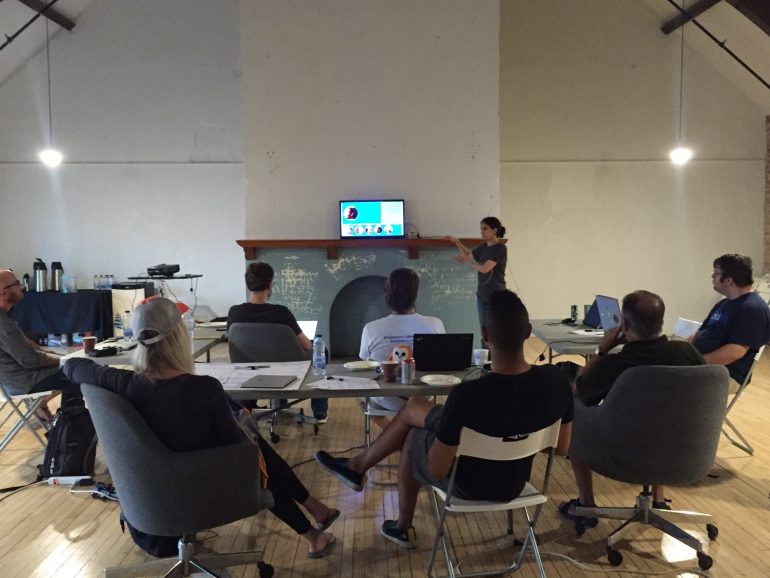Pour lire cet article en français, cliquez ici.
Cybernetics—the science of interconnectivity between humans and machines—is starting to reveal the full extent of its impact in our everyday lives. When we think of intelligent homes or buildings, we imagine that of Samsung in Korea or The Jetsons, which illustrated the collective imagination of the ‘60s. We see a house that adapts to our needs in real time and serves as a springboard to the outside world, toward a virtual universe.
Building this portal to the future — this bridge between our physical realm and our technological existence — is precisely what a group of programmers and designers of all ages were doing at the second edition of Hack the House this past weekend. Held at Montreal’s tech hub, Notman House, participants worked to create a more intelligent space by deploying sensors, powering screens through human activity on each floor, and harnessing the power of the Semantic Web to build connections between visitors and the occupants of the House — which includes entrepreneurs, investors, programmers, and designers coexisting under one roof.
The event was spearheaded by Noah Redler, founder of Arche Innovation and former campus director of Notman House; Jeffrey Dungen of ReelyActive; and independent software developer Marek Zaluski, who all participated in the projects.
“To really be able to go further and make integrations requires that data be available and accessible. One of the challenges we’ve had is that data isn’t always there.”
Presentations by Distech Controls, EVEY Maison Domotique, and Microsoft took place throughout the event, with the majority of the time spent on project development. Participants chose an aspect of the House that requires technological improvement, and worked together on their ideas through day and night until Sunday. In the late afternoon, each team presented their work in progress. During the time between this and the next hackathon, the teams are allowed to continue working on projects.
One example of a project continuing past the hackathon is Café OSMO’s digital platform, which will no longer simply display sponsors and advertisements, but will soon become more informative with information about what’s coming up each day, the weather outside, and public transit schedules visible for those gathered in the area. Zaluski and others worked to use the WebSocket protocol, which enables the websites to transmit information in real-time, to quickly channel communication throughout the building.
https://twitter.com/InnoCiteMTL/status/766762999923216384
The café and other locations throughout the House have also installed screens which present information about people onsite, detected through Bluetooth — a way of “reconnecting our digital presence with our physical presence,” said Dungen. His project aims to reconnect our virtual and true identities in order to restore a form of humanity to the web. The idea came to him when he realized that these identities tend to move in opposition to one another, despite our desire to inject more humanity into our digital existence.
The way it works is that you’ll see the identity of those present at the House — their photograph along with any recent activity on social media — as a way to understand who the people around you are, and to facilitate business connections. This information is volunteered by the users in the spirit of calm technology, enabling us to quietly absorb information without it being stressful or alarming.
“The goal is that you go to Notman House and it feels good because you know where people are and can direct your energies optimally,” says Dungen.
Overall, the weekend was productive and the advancements notable. However, one of the challenges facing Hack the House is that the companies participating were not all working in the same spirit of sharing that permeates Notman House — some did not design their platforms to actually share data, or they didn’t document how to actually retrieve the data for others to use.
“To really be able to go further and make integrations requires that data be available and accessible. One of the challenges we’ve had is that data isn’t always there,” explained Dungen. “It takes massive coordination, in the sense that all partners must be present and that’s the challenge. But we advanced well, and it’s good to see that some platforms are beginning to speak to each other.”
“We are moving forward because that is what this project is all about, step by step,” concluded Noah Redler.
The next edition is expected to take place in October.


